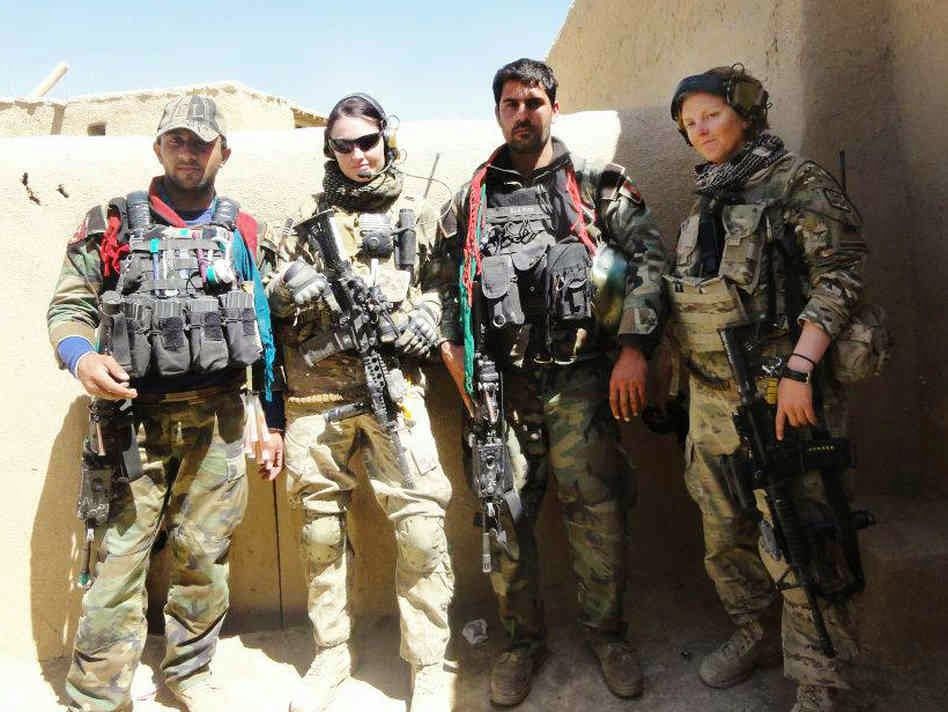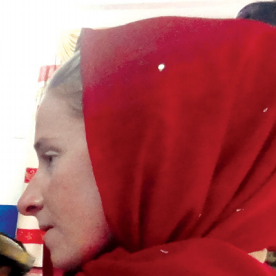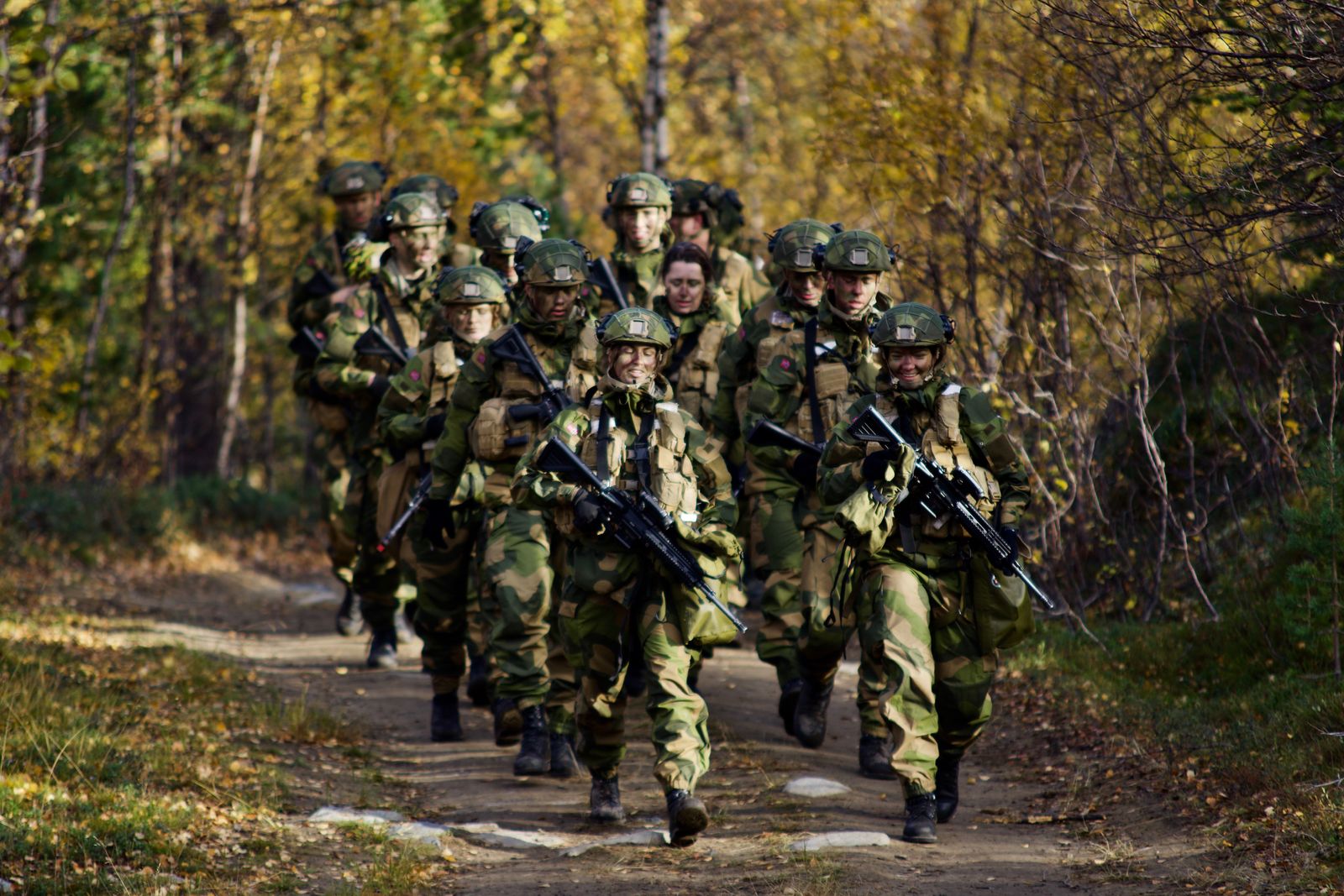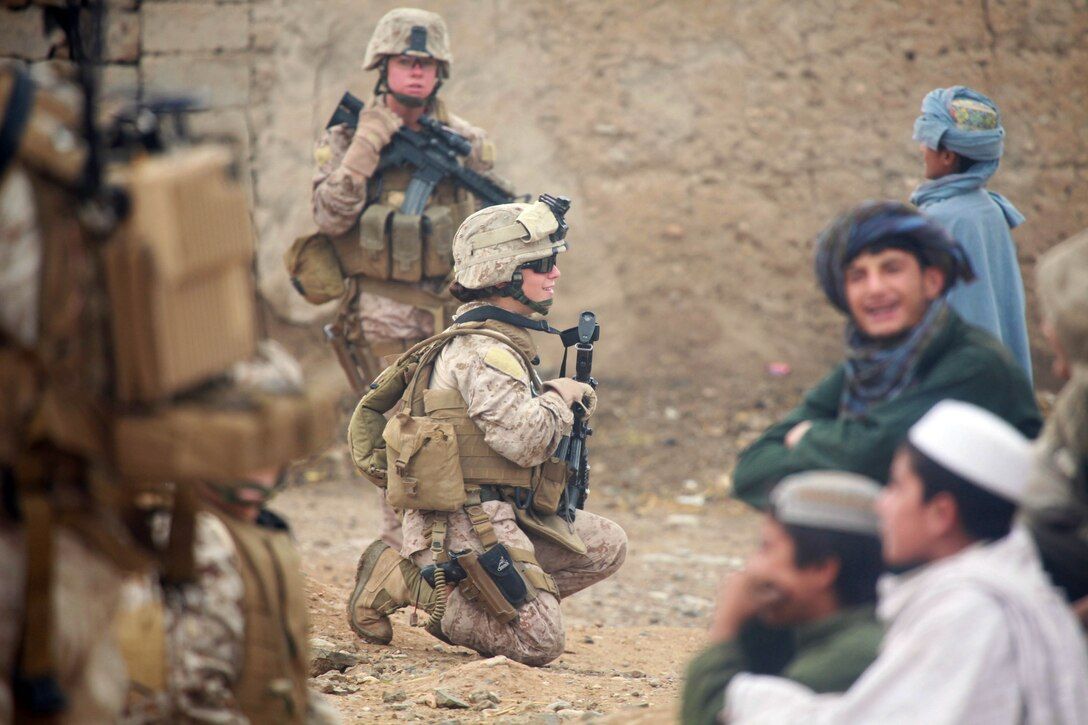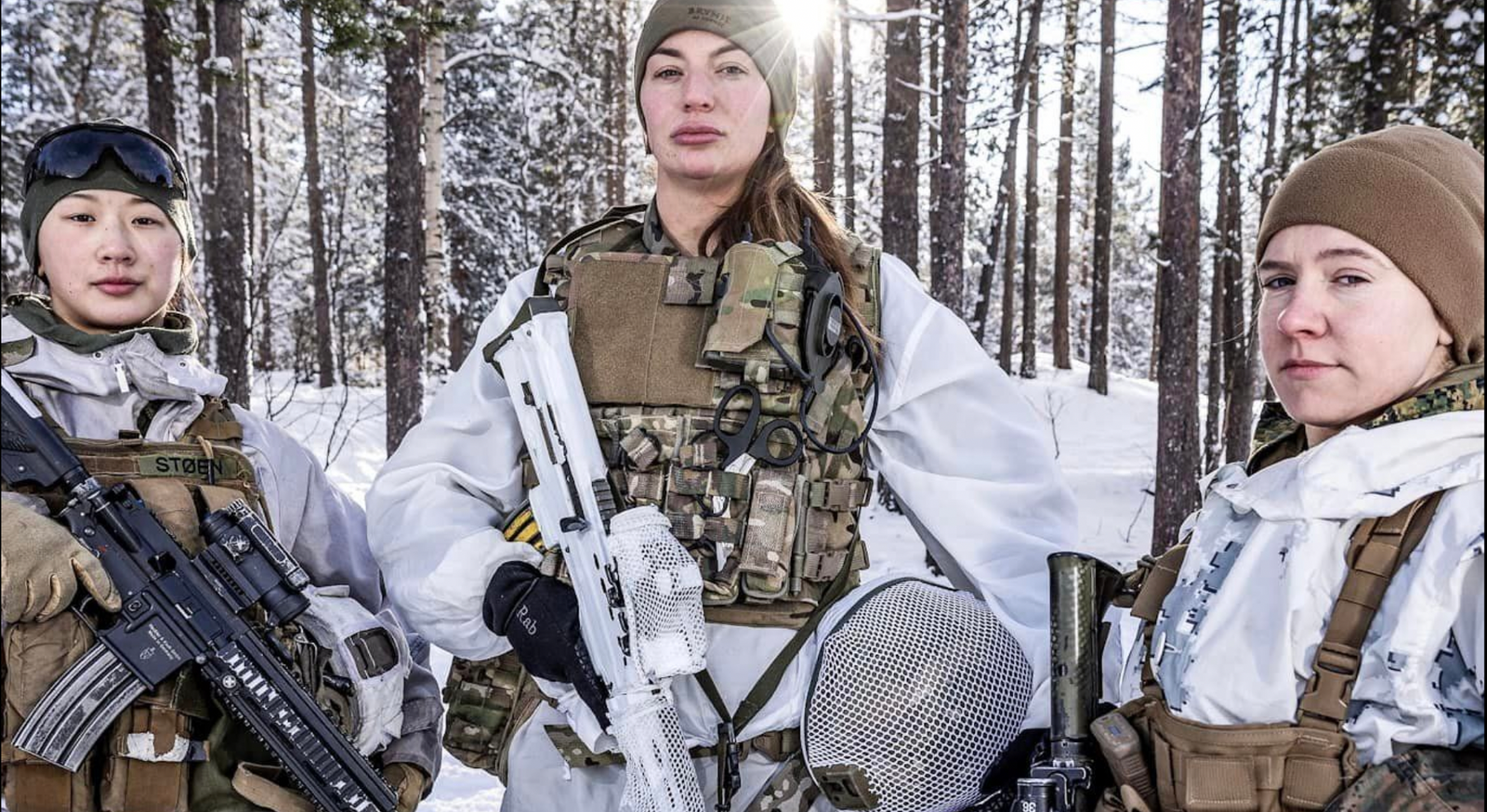On January 24, 2013, the Secretary of the Defense announced that by January 2016, the US military would implement full integration of women into their ranks to include Special Operations Forces (SOF). In doing so, the Department of Defense (DOD) aimed to open all jobs to men and women, allowing the military to capitalize on the capabilities of the entire population, creating the best qualified, diverse and adaptable military to fight all enemies, worldwide. If implemented correctly, it will optimize mission success by incorporating talents and attributes of the highest quality Soldiers, Sailors and Airmen across the country, despite their gender.
Regardless of support or opposition to the policy change, gender segregation by military specialty is a policy of the past. For this to be successful, it is critical that the integration process is executed meticulously to ensure progress is not inhibited.
There are many opinions on how to best integrate, however, overthinking the integration process is not only unnecessary but also potentially detrimental to forward progress. After being a member of male dominated fields on multiple deployments to Iraq, and as a team leader of a small SOF team in remote Afghanistan, there is no question that significant changes are not needed for success. Based on experience, I firmly believe that a “less is more” approach is a better way to conceptualize the process. To successfully integrate women into combat arms and SOF units, policy makers should focus on effective leadership and teambuilding to generate support for the policy while emphasizing adherence to standards and a mission first mentality. The weight of the responsibility for smooth integration resides largely on leadership to effectively monitor and promote the integration while not making great attempts at change or overemphasizing differences between men and women. Significant change throughout the process will only foster resentment and create cohesion issues because women will be blamed for changes made to previously male only organizations. As in any change in policy and regulation, there will be challenges along the way, but none that are insurmountable.

Integration of women in combat is nothing new. Women have held key combat roles in conflicts worldwide and throughout history, ranging from women disguising themselves as men during the Civil War, women operating as spies in the Office of Strategic Services (OSS), and female infantry units operating in Russia during World War II. Throughout the war on terror in Iraq and Afghanistan and despite combat exclusion laws, women from many NATO nations have served in combat roles alongside men where the lines of combat were often blurred. Even though these women were not necessarily team members in male exclusive units, they were often executing the same mission sets as their male counterparts under the auspice of a combat support role. For many women, this new policy allowing women in combat roles is merely a formality allowing them to officially participate in missions they’ve already been doing so for years. It is also important to note that despite this policy being centered on female inclusion in combat, many SOF units engage in a variety of non-combat missions worldwide such as advising and assisting local militaries, governments and nation building. This fact further questions why it has taken so long to integrate women into SOF teams. Additionally, why is there so much controversy over the integration of women in combat arms when it has already been conducted successfully throughout history?
First and foremost, prior to any discussion of how to best implement integration, DOD leadership and policymakers must ensure that all standards and selection processes remain the same. In a RAND study completed in May 2015, the initial concern of SOF personnel is that standards would suffer with female integration.[1] Not only are same standards easy to maintain, but they are necessary for success. Women will never be accepted in a male dominated profession if they are not held to the same physical and mental standards as men. Difference in standards hindered integration of women into the Canadian infantry in 1989. To meet quotas, standards were compromised in that women were held to lower physical standard requirements resulting in resentment from their male counterparts. While it resulted in more women qualifying to be a part of infantry unit organizations, the difference in standards drove a wedge between males and females in those units.[2] Additionally, women that support integration and are motivated to try out for SOF organizations, do not want to be evaluated on different standards. While men in SOF continue to emphasize concern for changes in standards, female performance and physical aptitude is rarely an actual issue. Women who are motivated and capable of being successful in a SOF selection process are rarely the weakest candidates in the group. Instead, they often exceed the capabilities of their average male counterparts in physical abilities and leadership. Like males in SOF, women who are selected often fall on the far right of an average bell curve. However, it is important to keep in mind that because only a fraction of those who try out for select units will be women, there will be far less women who qualify.[3] Low qualification rates is a something policy makers must be willing to accept, and should not be used as a reason to change standards to meet quotas.

In addition to standards remaining the same, women must not receive any preferential treatment. Women should not be offered slots to Army schools that better prepare them for upcoming assignments in advance of their peers. For example, after the Captain’s Career Course (CCC), women should not be offered the opportunity to attend Jumpmaster School while their peers are sent straight to their Airborne unit. Since schools can be prerequisites for company command, this makes those women eligible for command before their peers, who are often forced to wait in a long queue before eligibility. Not only should women not receive preferential treatment, but women should not receive additional time or opportunities to train up for SOF selections or schools. Women lieutenants who are not afforded the opportunity to attend schools or selections in coordination with their officer basic training course, should not be permitted to be excused from their leadership duties to focus on training. Male lieutenants do not receive those same opportunities and there should not be training offered to women that is not offered to men. Motivated women can seek out ways and methods on their own time to adequately train for any selection they desire to attend. While an attempt to smooth integration, creating exceptions for women typically leads to resentment with their male peers who often wait months on staff before receiving the same opportunities. Despite desires to integrate women quickly, units should refrain from offering women preferential opportunities and shorter career wait times over their peers. Any attempt to give women differential treatment over men to smooth integration will be noticed, driving a wedge between the two genders and negatively impacting cohesion. It is natural for senior leaders, especially those who support the integration of women in combat arms, to take steps to make the process less painful. Unfortunately, the result of these good intentions is often further resentment and ostracism of the very women they attempt to support as indicated by the examples above.
Current studies on considerations for female integration in SOF teams emphasize the need for a slow and meticulous integration process. If standards remain the same, the integration process will be slow. Few women are interested in being members of highly selective combat arms teams. Of the women that are interested, only a small percentage will pass the selection process, and of those who are selected, an even smaller percentage will successfully graduate from the training pipelines. There will never be a large influx of women, and there will never be a high percentage of women who are capable of passing all of the physical fitness requirements. Therefore, integration will be a slow process. The only way a rapid integration would occur is if leadership and policy makers demand a quota for women in elite units. A quota would force standards to drop, leading to similar issues experienced by the Canadian army. As such, expectations must be reasonable as integration continues to unfold. It is also important to note that an abundance of women falling short of the requirements in the first few years does not mean that integration efforts have failed.
Integration should occur as part of the currently established career path. This will ensure appropriate level of continuity and experience at all levels. As women enter previously denied military roles, they should enter the profession as junior officers and soldiers and rise through the ranks as all other personnel in the organization are expected to do. This would prevent women from entering units at mid command levels or senior levels without ever being a member of the smallest level team. Arguments are made that if junior females enter combat units, there must be senior level female mentors in place to guide them. With the necessary support, guidance and mentorship, a subordinate should be able to thrive under the coaching of any good leader, regardless of eithers gender. Women do not need female mentors in their career path and can succeed with male mentors and role models. There is no need to force mentorship by injecting women in the middle of their career into previously male only units.

A Rand survey specified that many men, the majority being non-commissioned officers, stated that they are vehemently opposed to serving alongside women as their teammate.[4] To justify these opinions, many men stated they were specifically concerned about unit cohesion, favoritism, family problems, unit readiness, deployability, hygiene issues and working with partner forces.[5] These are common concerns of men serving in SOF units, however as Rand depicts, the men surveyed could not base their opinions on personal experience because to date, none of them have ever had a female teammate.[6] If they had bad experiences with females in the military, those females had not gone through the intense selection and training process as their future SOF teammates. Additionally, with lack of experience working with women in general, it is likely that their perceptions of women are based on the relationships they have with their female friends and family members, and the general stereotypes of women. For example, arguments are made that injuries or pregnancy in women will be a readiness issue as elite units prepare to deploy. It is reasonable to argue that women who go through an intense selection process will prioritize mission readiness at critical times. However, regardless if women get injured or pregnant, injury and family issues are a risk to male deployability as well. SOF units are prepared to react to those situations through their experienced and capable succession of command. It is possible that once introduced to the caliber of women who can and will succeed in SOF, men will be highly impressed with the motivation and capability of their women teammates. In turn, with more inclusion of women in male dominated work environments, concerns and stereotypes commonly held by male counterparts will normalize and diminish over time.
When pointed questions are asked to men about the best or most qualified woman they ever worked with, some will have an example of one who stood out in her physical ability, capability and mental strength. When large surveys are conducted throughout the military asking men’s opinions on females in combat, men are likely to defer to the majority of women they’ve been exposed to such as administrative or support personnel, and not exceptional circumstances of women who are capable of succeeding in combat. In this case, the surveys can generalize all military women into a category that fits a female stereotype. This results in men indicating on surveys that they do not want women in their units because the women they envision joining, are stereotypical support personnel which whom they are familiar. The women that successfully complete SOF training courses do not fit into that stereotype and will be very different than average females in uniform. Of the men surveyed in the Rand study, some indicated that while they are opposed to working with women as their teammates, they are open to women serving as special operations enablers with specific skill sets.[7] Arguably despite this stated preference, likely out of familiarity with this arrangement, it is easier to build a cohesive unit when everyone is working on the same team. While it is necessary to have enablers with specific skill sets attached to SOF units, if women can pass all standards and are value added teammates, their contributions will be noticed and accepted.
Once qualified to operate in combat units, women must not be given jobs commensurate with their gender expectations. JSOU conducted a study on mixed gender elite teams that emphasized the importance between the distinction of sex and gender.[8] It concluded that all operators must be judged on “actual, not expected ability” and emphasized that women must be given the opportunity to serve in roles in which they are capable of and given opportunities to demonstrate their expertise in executing tasks at the same level as males.[9] A risk to integration and a “mission first” attitude could be that leadership places women in roles based off of femininity rather than capability.[10] This must be avoided because it will prevent women from demonstrating their abilities to their male peers. In the same article, JSOU also highlights other male dominated organizations who have successfully integrated women which include FBI SWAT, CANSOF, NASA and Smokejumpers (elite firefighters). All of these organizations stressed that performance of teams was not compromised due to female integration.[11] The study also highlighted that female inclusion was not a defining variable in the identity of the organization.[12] A few of the organizations stated that they’d experienced sexual harassment issues, but the women dealt with the issues appropriately and in a timely manner.[13]
Just because women are now permitted to operate in all facets of the military does not mean women will be members off all teams. Based on the low number of women who successfully complete training and are selected as SOF operators, there will not be enough to represent the full spectrum of SOF teams across the military. Therefore, women should first be assigned to missions where they are most needed, prioritizing mission accomplishment. For example, women are critical in areas where female engagement is anticipated. Conversely, women should not be prematurely excluded from missions based off perceived cultural differences. Women are suited to operate in a variety of areas with cultural sensitivity. Women have been equally or more successful than men in Iraq and Afghanistan when given the language and cultural expertise to do so. As I experienced on deployments to Iraq and Afghanistan when partnered with local military and government officials, Iraqi and Afghan men do not always consider American women the same as indigenous women. On the contrary, my partners, especially in Afghanistan, were more comfortable working with me, perhaps because I was less intimidating than the male SOF operators at our outpost. In cases like this, women may actually be better suited to accomplish certain special operations missions than men.
A major concern to integration is cohesion. Research shows that many men are concerned that females will degrade the bonding and cohesion of teams.[14] One proposed reason is that military units often portray a hyper-masculine persona that is used to motivate Soldiers and generate aggression that is required to be successful in war.[15] This hyper-masculine culture consists of exaggerated sexuality, sexually referenced humor, language, name calling and roughhousing, which can all be used to motivate competition and aggression.[16] Another aspect of cohesion that is a result of hyper-masculinity is sexual competition over female attention. This can distract from mission objectives, and create animosity between male team members.[17] Each argument is valid, and undoubtedly, there will be cohesion issues that are based on sexuality. However, these types of issues do not have to become systemic problems if dealt with swiftly and effectively. Perhaps the reason cohesion is such a perceived integration issue is because in the past, females have only worked as enablers and not as teammates. There is a different bond between team members than between members of two teams. The process of training up and preparing for a mission bonds people together and drives home a responsibility to take care of one another. This is a level of cohesion that surpasses gender, especially if all teammates are capable and qualified. Arguably, war knows no gender, just capability and reliability, which is outside the realm of gender differences. Additionally, following completion of SOF training, women must work hard and execute the demands of their jobs with initiative and expertise, while not expecting applaud from the military and political communities for their achievements. Staying focused on and superbly executing responsibilities will earn the respect of co-workers, which will lead to a culture shift, acceptance and increased cohesion. Like other challenges experienced by teams, cohesion is one of many that must be managed by mature personnel and solid leadership. The issue of outward hyper-masculinity was addressed when homosexuals were allowed in all branches of the military. When this occurred, it was no longer appropriate for outward displays of homophobia, sexual explicit material or language. Prior to women entering SOF, the military adapted measures to prevent these types of inappropriate displays of masculinity from occurring such as increased emphasis on sexual harassment and equal opportunity programs, and leadership expressing their refusal to tolerate these incidents. At the culmination of their research, authors of several studies analyzed by JSOU stated “cohesion need not suffer if the culture of hypermasculinity is replaced with one of ‘ungendered professionalism’ as the bond that holds unit members together.”[18]
Sexual tension between mixed gender groups is human nature. It will always occur whether it is in the civilian workplace, government arena or in the military. As women continue to be integrated in SOF teams, it is critical that leaders emphasize the importance of maturity and personal responsibility for their actions. Expectations of conduct must be made clear in integrated units, and leaders must follow through with appropriate discipline measures. Integrated military units have been operating for decades with success. Each time opportunities have been opened to minorities or women, there has been concern and controversy. JSOU examined several research projects done on non-combat units which concluded that the effects of gender integration on cohesion were negligible.[19] One example is a Rand study conducted in 1997 pertaining to new jobs opened to women in 1993 that was focused on readiness and morale. It concluded that gender differences did not impact cohesion; cohesion was more reliant on good leadership and emphasis on unity and the importance of the contribution of all members when accomplishing missions.[20] Furthermore, the study distinguished between task cohesion (group commitment to achieving an end state) and social cohesion (emotional bonds). It stated that overall task cohesion had a greater impact than social cohesion in a unit.[21] JSOU also depicts that social and task cohesion are considered horizontal cohesion, while leader – subordinate relationships are considered vertical cohesion. Vertical cohesion has a great impact on horizontal cohesion and a better predictor or the wellbeing of Soldiers over time. This indicates that overall, unified task and purpose outweigh social bonding with regards to cohesion, and good leadership presides over both.[22]
Based off the wars in Iraq and Afghanistan over the last 16 years, the line drawn between combat and non-combat units is blurred. Regardless, women have served in direct combat for years with few modifications made to accommodate them and performance of those units has not suffered. Arguably, greater integration in all units would be beneficial. For example, the military often takes unnecessary measures to separate males and females due to sexual assault and harassment concerns. This makes cohesion more difficult because when women are separated from their leadership and the majority of their unit, they are the last ones to receive information, making them less prepared. Separating women from their male unit members makes the female population a greater target. Studies on Black American integration into combat units in WWII also indicates that as consistent contact with minority groups increased, so did favorable attitudes towards those groups, especially if both were jointly involved in meaningful tasks with a clear objective.[23]

Quality leadership at all levels throughout the integration process is critical. Leaders set the example for their Soldiers, as well as have the ability to mold and mentor those in their command. For integration to be successful, leaders must fully embrace the new policies and show it daily though their words and actions. While everyone will inherently be forced to support, there will be some leaders that internalize the integration more than others and outwardly demonstrate their support. They should be the first ones to lead integrated units. Faced with change and controversy, good leadership serves to guide and shape all types of units towards success. The US Army relies on leaders to be adaptable and exude high moral and ethical standards. Faced with the integration of women in combat, success lies in the quality of leadership in charge of newly integrated units. Leadership in today’s military is competent and capable of surmounting gender differences when it comes to team building and cohesion. The military leaders of today are trained to build cohesive teams from the day they are commissioned, making them more capable in this realm than any other organization in the world. Despite good leadership, change is difficult for organizations to surmount and it takes time. Policymakers and military leaders must be patient with their expectations and understand that culture within an organization changes gradually as new policies are implemented. However, with good leadership and common goals, this culture shift is surmountable and eventually inevitable.
The military is an organization that relies on adaptability in all environments. It is also an organization with a “mission first” attitude that requires its personnel to be fully capable, physically, mentally and emotionally. Women can successfully integrate into all units while maintaining these standards. The military has been successful through a myriad of change from the integration of Black Americans, homosexuals and women. At each new step, there has been controversy about standards and cohesion. In all situations, militaries have surmounted these challenges. Integration and change is not always easy for an organization and can take decades to demonstrate tangible progress.[24] However, it is also not something that requires a lot of organizational change. The more change that is made, the more resentment males will have towards new females in their units. The leadership in the US military are highly trained and qualified to lead Soldiers, Airmen and Sailors through these changes by demonstrating their maturity and support of the integration. To be most successful in the integration process, less change is better. History has demonstrated that successful gender integration requires special attention to equal training standards, minimizing change, establishing team cohesion, quality leadership and equal treatment of men and women in all aspects of career progression and conduct. In the end, it doesn’t matter if the nation’s elite forces are male or female. The only thing that matters is that they are the best possible person to accomplish the mission.
Photo: Female Engagement Team in Afghanistan
[1] Thomas S. Szayna et al., Considerations for Integrating Women into Closed Occupations in U.S. Special Operations Forces (Santa Monica, CA: RAND Corporation, 2015), xvii.
[2] Charles Knight, “Sexuality, Cohesion, Masculinity and Combat Motivation: Designing Personnel Policy to Sustain Capability,” Australian Army Journal, vol. X, no. 3 (Cultural edition, 2013):61.
[3] Ibid., 61.
[4] Szayna et al., 224.
[5] Ibid., 224.
[6] Ibid., 224.
[7] Ibid., 224.
[8] Jessica Glicken Turnley, Special Operations Forces Mixed Gender Elite Teams (MacDill AFB, FL: JSOU, 2016), xi.
[9] Ibid., xi.
[10] Ibid., xi.
[11] Ibid., xi.
[12] Ibid., xi.
[13] Ibid., xi.
[14] Szayna et al., 224.
[15] Knight, 64.
[16] Ibid., 64.
[17] Ibid., 63.
[18] Turnley et al., 49
[19] Ibid., viii.
[20] Ibid., 48.
[21] Ibid., 48.
[22] Ibid., 42.
[23] Ibid., 44.
[24] Ibid., xii.
Bibliography
- Knight, Charles. "Sexuality, Cohesion, Masculinity and Combat Motivation: Designing Personnel Policy to Sustain Capability." Australian Army Journal, vol. X, no. 3 (Culture Edition 2013): 58-78.
- Szayna, Thomas S., Eric V. Larson, Angela O'Mahony, Sean Robson, Agnes Gereben Schaefer, Miriam Matthews, J. Michael Polich, Lynsay Ayer, Derek Eaton, William Marcellino, Lisa Miyashiro, Marek Posard, James Syme, Zev Winkelman, Cameron Wright, Megan Zander Cotugno and William Welser. Considerations for Integrating Women into Closed Occupations in U.S. Special Operations Forces. Santa Monica, CA: RAND Corporation, 2015.
- Turnley, Jessica Glicken, Dona J. Stewart, Rich Rubright, Jason Quirin. Special Operations Forces Mixed Gender Elite Teams. MacDill AFB, FL: JSOU, 2016.


